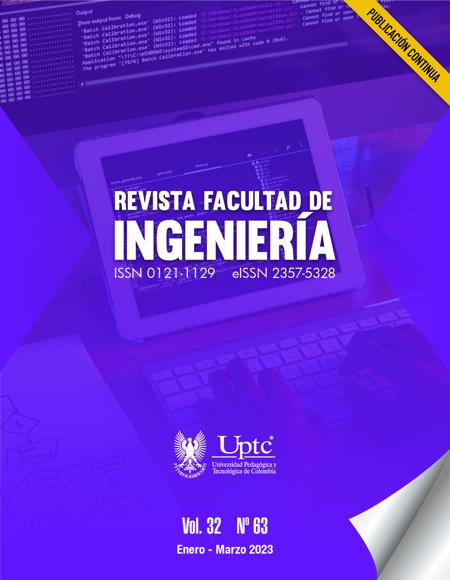IoT-ATL: Prototype of a Digital Twin to Simulate Educational Scenarios in the Art and Technology Laboratories at the Departmental Institute of Fine Arts in Cali, Colombia

Abstract
Digital Twins (DTs) have the potential to revolutionize the manufacturing, construction, maintenance, and control of industrial processes due to their ability to bridge the physical and digital realms. However, creating complex digital concepts requires carefully implementing appropriate methodologies and processes. This study presents a prototype digital twin of the art and technology laboratories at the Departmental Institute of Fine Arts in Cali, Colombia. We employ the Scrum agile development methodology to streamline the design and development process of the IoT-ATL prototype. A three-layer IoT architecture is established; it facilitates mapping the components of the digital twin and the physical elements to be simulated. The IoT-ATL prototype allows students and teachers to interact and learn about the physical state of the laboratory in a digital environment, thus increasing visibility of the availability and use of technological elements in the space.
Keywords
Agile Methodologies, Digital twins, Internet of Things, Virtual Simulation, Scrum
References
- D. J. Wagg, P. Gardner, R. J. Barthorpe, W. K., “Digital Twins: State-of-The-Art and Future Directions for Modeling and Simulation in Engineering Dynamics Applications,” Journal of Risk and Uncertainty in Engineering Systems, Part B: Mechanical Engineering, vol. 6, no. 3, e4046739, 2020. https://doi.org/10.1115/1.4046739 DOI: https://doi.org/10.1115/1.4046739
- M. Singh, E. Fuenmayor, E. P. Hinchy, Y. Qiao, N. Murray, D. Devine, “Digital Twin: Origin to future,” Applied System Innovation, vol. 4, no. 36, e4020036, 2021. https://doi.org/10.3390/asi4020036 DOI: https://doi.org/10.3390/asi4020036
- M. Grieves, Origins of the Digital Twin Concept. 2016. Working paper. https://doi.org/10.13140/RG.2.2.26367.61609
- A. El Saddik, “Digital twins: The convergence of multimedia technologies,” IEEE multimedia, vol. 25, no. 2, pp. 87–92, 2018. https://doi.org/10.1109/MMUL.2018.023121167 DOI: https://doi.org/10.1109/MMUL.2018.023121167
- Y. Fu, G. Zhu, M. Zh, F. Xuan, “Digital Twin for Integration of Design-Manufacturing-Maintenance: An Overview,” Chinese Journal of Mechanical Engineering, vol. 35, no. 80, e760, 2022. https://doi.org/10.1186/s10033-022-00760-x DOI: https://doi.org/10.1186/s10033-022-00760-x
- F. Tao, J. Cheng, Q. Qi, M. Zhang, H. Zhang, F. Sui, “Digital twin-driven product design, manufacturing and service with big data,” The International Journal of Advanced Manufacturing Technology, vol. 94, no. 9, pp. 3563–3576, 2017. https://doi.org/10.1007/S00170-017-0233-1 DOI: https://doi.org/10.1007/s00170-017-0233-1
- A. Sharma, E. Kosasih, J. Zhang, A. Brintrup, A. Calinescu, “Digital Twins: State of the art theory and practice, challenges, and open research questions,” Journal of Industrial Information Integration, vol. 30, e100383, 2022. https://doi.org/10.1016/j.jii.2022.100383 DOI: https://doi.org/10.1016/j.jii.2022.100383
- A. M. Madni, D. Erwin, A. Madni, “Exploiting Digital Twin Technology to Teach Engineering Fundamentals and Afford Real-World Learning Opportunities,” in ASEE Annual Conference & Exposition, 2019. https://doi.org/10.18260/1-2--32800 DOI: https://doi.org/10.18260/1-2--32800
- T. I. Erdei, R. Krakó, G. Husi, “Design of a Digital Twin Training Centre for an Industrial Robot Arm,” Applied Sciences (Switzerland), vol. 12, e8862, 2022. https://doi.org/10.3390/app12178862 DOI: https://doi.org/10.3390/app12178862
- Y.-B. Lin, M.-Z. Shieh, M.-F. Shih, C.-C. Cheng, “EduTalk: An IoT Environment for Learning Computer Programming and Physics,” IEEE Internet Things Journal, vol. 9, no. 21, pp. 21946–21957, 2022. https://doi.org/10.1109/JIOT.2022.3182280 DOI: https://doi.org/10.1109/JIOT.2022.3182280
- K. A. Peppler, “Media arts: Arts education for a digital age,” Teachers College Record, vol. 112, no. 8, pp. 2118–2153, 2010. https://doi.org/10.1177/016146811011200806 DOI: https://doi.org/10.1177/016146811011200806
- M. Xiong, H. Wang, “Digital twin applications in aviation industry: A review,” The International Journal of Advanced Manufacturing Technology 2022, vol. 121, no. 9, pp. 5677–5692, 2022. https://doi.org/10.1007/S00170-022-09717-9 DOI: https://doi.org/10.1007/s00170-022-09717-9
- H. T. Nguyen, Ø. Haugen, “Building Experimental Laboratory for Digital Twin in Service Oriented Architecture,” in Proceedings - 2022 IEEE 5th International Conference on Industrial Cyber-Physical Systems, ICPS 2022, pp.01-06 2022. https://doi.org/10.1109/ICPS51978.2022.9816926 DOI: https://doi.org/10.1109/ICPS51978.2022.9816926
- Bellas Artes Institución Universitaria del Valle, “Bellas Artes Institución Universitaria del Valle,” 2022. https://bellasartes.edu.co/
- K. Schwaber, J. Sutherland, “La guía scrum 2020(Scrum Guide 2020),” Scrum.org.
- L. Atzori, A. Iera, G. Morabito, “The Internet of Things: A survey,” Computer Networks, vol. 54, no. 15, pp. 2787–2805, 2010. https://doi.org/10.1016/j.comnet.2010.05.010 DOI: https://doi.org/10.1016/j.comnet.2010.05.010
- R. van Kranenburg, “The Internet of Things: A critique of ambient technology and the all-seeing network of RFID,” Institute of Network Cultures, 2007. https://acortar.link/uoJpXn
- S. Naveen, S. G. Hegde, “Study of IoT: Understanding IoT Architecture, Applications, Issues and Challenges,” in Proceedings - International Conference on Innovations in Computing & Networking, ICICN16. 2016.
- P. Gokhale, O. Bhat, S. Bhat, “Introduction to IOT,” International Advanced Research Journal in Science, Engineering and Technology, vol. 5, no. 1, pp. 41-46, 2018, https://doi.org/10.17148/IARJSET.2018.517
- J. Gubbi, R. Buyya, S. Marusic, and M. Palaniswami, “Internet of Things (IoT): A vision, architectural elements, and future directions,” Future Generation Computer Systems, vol. 29, no. 7, pp. 1645–1660, 2013. https://doi.org/10.1016/j.future.2013.01.010 DOI: https://doi.org/10.1016/j.future.2013.01.010
- J. Zhang, M. Liang, “A new architecture for converged internet of things,” in International Conference on Internet Technology and Applications, ITAP 2010, pp. 1-4, 2010. https://doi.org/10.1109/ITAPP.2010.5566263 DOI: https://doi.org/10.1109/ITAPP.2010.5566263
- O. Said, M. Masud, “Towards Internet of Things: Survey and Future Vision,” International Journal of Computer Networks, vol. 5, no. 1, e001, 2013.
- D. Dinculeană, X. Cheng, “Vulnerabilities and Limitations of MQTT Protocol Used between IoT Devices,” Applied Sciences, vol. 9, no. 5, e848, 2019, https://doi.org/10.3390/APP9050848 DOI: https://doi.org/10.3390/app9050848
- Anonym, Sci-Fi Styled Modular Pack, 2022. https://assetstore.unity.com/packages/3d/environments/sci-fi/sci-fi-styled-modular-pack-82913
- D. Svanæs, A. Scharvet Lyngby, M. Bärnhold, T. Røsand, S. Subramanian, “UNITY-Things: An Internet-of-Things Software Framework Integrating Arduino-Enabled Remote Devices with the UNITY Game Engine,” Lecture Notes in Computer Science, vol. 12789, pp. 378–388, 2021. https://doi.org/10.1007/978-3-030-77277-2_29/COVER DOI: https://doi.org/10.1007/978-3-030-77277-2_29